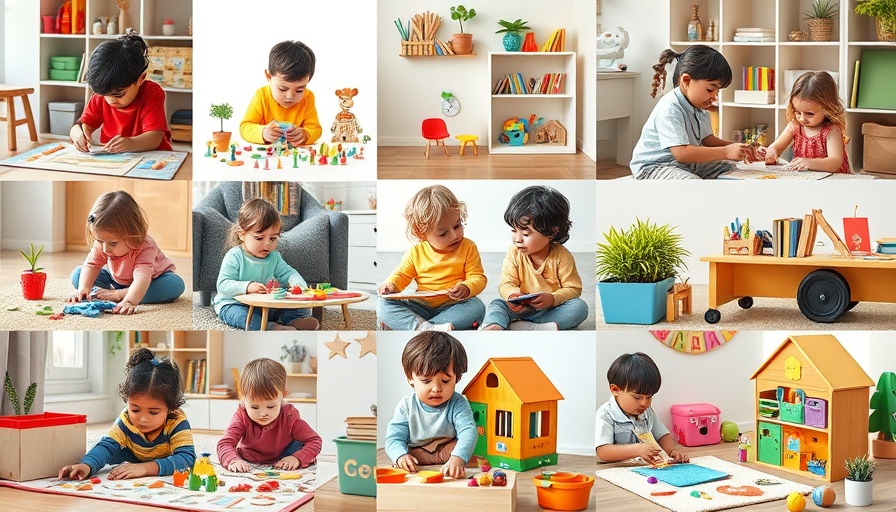
Unlocking the Power of Quiet Time for Preschoolers
As parents, finding those rare moments of peace amidst the lively atmosphere of a household with preschoolers can be a true victory. These moments, often marked by our children independently playing or engaging in quiet activities, are not just precious breaks for us; they also serve as essential periods for their development. For parents with four-year-olds, harnessing these tranquil interludes can yield both educational benefits and an opportunity for self-care.
Why Quiet Time Matters
Quiet time isn’t merely about giving parents a breather. It's a crucial component of a child's daily routine that fosters independence, creativity, and self-regulation. Research shows that when children have opportunities for solitary play, it enhances their problem-solving skills and emotional resilience. This new wave of ‘quiet time’ can become a treasured part of the day, providing you with an occasion to recharge while your child discovers the joy of self-directed learning.
Engaging Quiet Activities Tailored for Four-Year-Olds
Here’s a roundup of delightful activities that can capture the imagination of your preschooler while allowing you to sneak a moment to breathe:
1. Puzzles: The Fun of Problem-Solving
Puzzles are not only fun but also help develop your child’s cognitive abilities. From shapes to animals, there's a range that caters to different interests. Set out two puzzles during quiet time, allowing your child to play with them over multiple sessions. This repetition helps solidify their problem-solving skills as they learn to piece together and take apart the puzzles independently.
2. Reading Adventures
Books can transport kids to fantastic worlds. Offering them a choice of activity books and storybooks taps into their interests. Books themed around cars or animals can offer gentle guidance on letters or sounds, making reading both informative and entertaining. This quiet, solitary reading time is crucial for language development and storytelling skills.
3. Building Blocks: Fostering Creativity
Introducing building sets, like LEGO® or Arc-a-Tek, encourages imaginative construction and spatial reasoning. Children love following directions to create structures and can express their creativity by designing from their own imaginations. Engage your child with hints on constructing specific items, then step back and let them take the lead!
4. Coloring and Drawing
Though coloring may feel like a classic activity, it provides immense therapeutic value for children. Supply a variety of coloring tools—crayons, markers, and colored pencils—and let them explore by setting out specific theme-based pages. Fostering creativity during quiet time aids emotional expression and fine motor skills development.
5. Hands-on Activities: Ready-to-Go Kits
Consider using a dry erase board or sticky mosaics to tap into your child's artistic flair. These activities foster independent learning and self-expression. For instance, a dry erase board allows them to practice letters or numbers repetitively, enhancing both writing skills and confidence.
Future Activities to Encourage Independence
To keep things fresh and exciting, it's essential to continually seek new activities to add to your child’s quiet time routine. Here are a few suggestions you might consider:
- Weaving: This activity enhances fine motor skills and creativity.
- Magnetic Shapes: Encourage imaginative play with sets that combine learning with creativity.
- Word Play: Integrate sight words or letters into engaging games for gradual learning.
A Final Word on the Importance of Self-Care
As children engage in solitary play, parents shouldn't underestimate the necessity of these quiet times for their own self-care. Taking just a few minutes to enjoy a cup of coffee or a moment of reflection can help you rejuvenate and approach the rest of the day with renewed energy. Remember that 'quiet time' is not just an accessible solution to keep children engaged—it's also a vital component of your parenting strategy.
Give quiet time a shot in your daily routine, experiment with various activities, and embrace this new phase as an opportunity for both you and your child. Let these delightful moments be the foundation for independent play, nourishing both their creativity and your peace!
 Add Row
Add Row  Add
Add 




Write A Comment